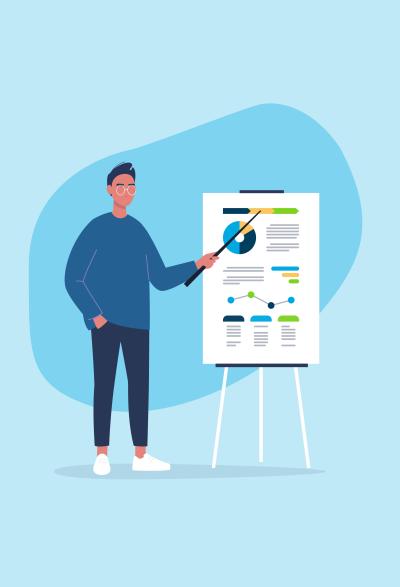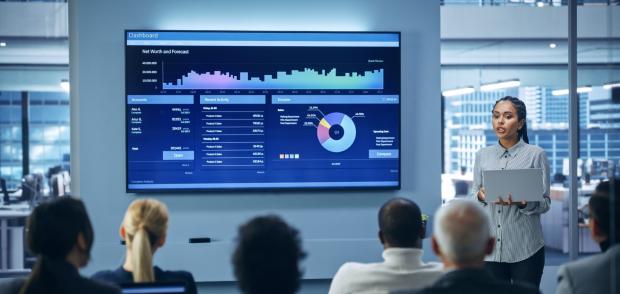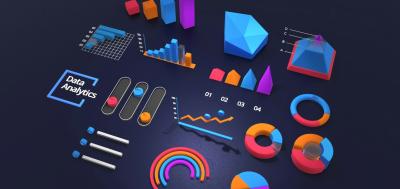These days, more data is collected and used than ever before. In fact, according to recent estimates, more than 402 million terabytes of data are generated each day across the globe.
But with so much data being created, how can we make sense of it all? Enter the field of data analytics and, more specifically, data storytelling. With a better understanding of what data storytelling is, what it entails, and its many applications, you can better grasp how this skill fits into the broader field of business analytics and how it can be valuable in your work.
What Is Data Storytelling?
Before we dive any further into the importance of data storytelling in the business world and its many practical applications, it's important to understand what data storytelling is and how it bridges the proverbial gap between data science and decision-making. So, what is data storytelling, exactly? Let’s dive in.
Specifically, data storytelling involves using complex data to create a compelling narrative, making it easier for stakeholders to understand insights and make informed decisions. In other words, data storytelling involves taking large amounts of data and essentially translating that data into a story.
How Data Storytelling Bridges the Gap Between Data and Decisions
People often struggle to follow narratives filled with numbers and statistics. However, suppose that the same data can be presented in a more palatable way and be easier to understand (such as through graphs or other means of data visualization), and then the insights themselves may be easier to grasp. This can empower business leaders and other stakeholders to make the right data-based decisions.

The Benefits of Data Storytelling
There are many benefits to using data storytelling in business, ranging from its ability to communicate complex information more effectively to its potential to influence stakeholders and build a data-driven culture.
Communicate Complex Information Effectively
The most significant benefit of using data storytelling in business is the potential to improve understanding of complex information and data across the board. Using data to effectively construct a narrative can enhance understanding while adding value and interest to your data stories. All of this can minimize misunderstandings while keeping everybody on the same page.
Influence Stakeholders
Numbers alone are unlikely to captivate audiences, even if the insights you've gained from that data excite your team. Because of this, it can be extremely useful to apply data storytelling techniques to influence and engage your stakeholders. When complex data is presented in a way that's easy to follow (such as through data visualizations and in conjunction with qualitative data), you can keep your audience engaged and bring them one step closer to seeing your main point.
Foster a Data-Driven Culture
In many ways, data storytelling can serve as a universal language of sorts. While not everybody within a business may understand the meaning of a particular statistic on its own, data storytelling provides the additional context that's needed to get everybody on the same page.
The Elements of Effective Data Storytelling
Are you looking to be a more effective data storyteller? By following these three principles, you can do just that.
Identifying Your Audience and Their Needs
First and foremost, identify and research your target audience as much as possible. By taking the time to pinpoint your audience's needs and pain points, you can better craft narratives that will be engaging and useful to them.
Data Visualization
From there, work on taking your raw data insights and using data visualization tools to "translate" them for your audience. There are plenty of tools (both paid and free) that you can use to generate eye-catching graphics and other visuals, so feel free to get creative here—but don't forget to keep your target audience in mind!
Crafting a Narrative Around Your Data
The fun part of data storytelling is crafting a compelling narrative around your data and insights. Using data to tell a story that resonates with your audience can improve overall comprehension and engagement while influencing your biggest stakeholders. All of this is a win-win for your business.
Techniques for Presenting Data Insights
What are some of the best ways to present data? Ultimately, it boils down to the type of data you're working with and your audience, but there are some great tools and techniques you can follow to optimize your presentation.
Visualization Tools and Techniques
Taking the time to visualize your is one of the best ways to help your audience follow your narrative and understand your key points. For example, rather than simply presenting your audience with a harsh percentage figure, you might visualize it as a graph or pie chart. Infographics can also be a great way to visualize complicated data in a way that is accessible and engaging to your audience.
Storyboarding Your Data for Maximum Impact
Just as you would storyboard a video, taking the time to storyboard a data narrative can help you break it down into smaller parts. In turn, this can help you get a better feel for areas of your story that may need additional information or context, as well as your narrative's overall flow and progression.

Successful Data Storytelling Examples in Business
To get a true feel for the power of data storytelling in business, looking at a few data storytelling examples can be helpful.
How a Retail Giant Leveraged Data Storytelling to Boost Sales
Consider, for instance, how fashion retailer Topshop used data storytelling to communicate with its website users regarding a change to the site's navigational menu. Specifically, the brand used a combination of qualitative and quantitative feedback and insights to inform users of the change in real time while creating variations of the site to respond to user feedback.
Transforming Healthcare With Data-Driven Stories
Data storytelling is also commonly used in healthcare marketing, particularly in pharmaceutical sales. However, it has also been effectively used to mitigate global health crises. For instance, consider the United Nations Office on Drugs and Crime (UNODC) and the interactive webpage its team created to spread awareness of synthetic drugs and substance abuse.
Overcoming Challenges in Data Storytelling
Becoming an effective data storyteller is something that takes a lot of time and practice, but there are some common mistakes that you can avoid early on.
Addressing Common Pitfalls and How to Avoid Them
One of the biggest mistakes you can make in telling a narrative with data is simply not knowing your audience. Detailed audience research and analysis should always be the first step of the process. Otherwise, you could miss the mark completely. Likewise, using the wrong type of data visualization can also hinder comprehension of your data stories, so be sure to consider all your options before settling on one.
Ensuring Data Integrity and Ethical Considerations
Data integrity is another concern, especially regarding the large amounts of data collected and used today. At the end of the day, your narrative is only as good as your initial data, so your team must put in the time and effort to ensure that data is collected ethically and with a strong sense of integrity above all else.
Master Data Storytelling at Champlain
Data storytelling is a powerful tool that can help translate the most complex data into visualizations and insights that stakeholders can understand. With the insights from data storytelling, optimizing business intelligence and decision-making in today's data-centric business world is possible.
Interested in learning more about data storytelling? Check out Champlain College Online's master's degree in business analytics program, which includes coursework in such topics as database management, data storytelling, and advanced financial decision-making. Plus, this program is offered entirely online, so students can pursue a degree without putting other areas of their lives on hold.
Learn more about our master's in business analytics program by getting in touch, or get the ball rolling by completing an online application for enrollment today.
FAQs
Effective data storytelling requires a solid understanding of your audience, as well as the ability to visualize data in a way that can be grasped by your audience. Successful data storytellers also tend to have an excellent understanding of the various components of a narrative, including conflict and resolution.
Small businesses can especially benefit from data storytelling by using this technique to essentially translate large amounts of complex data into insights that are easy for stakeholders to understand. Using data storytelling, small businesses can grow their own brand reputations while adding value and a more humanized touch to their data.
There are so many tools on the market that can be used for data visualization, whether you're looking to create charts, graphs, or other representations of complex data. Some of the most trusted data visualization tools used by businesses today include:
- Tableau
- Google Charts
- Looker
- Microsoft Power BI
The three key elements of data storytelling are:
- Narrative - This involves crafting a compelling story using your raw data as a supporting pillar.
- Visuals - This means representing complex data in easy-to-understand visuals (such as charts and graphs) to enhance comprehension.
- Data - This involves using data only to support your narrative and not as the sole foundation of your argument. Otherwise, you run the risk of overwhelming your audience with too many numbers.
You May Also Like

Blog Topics





